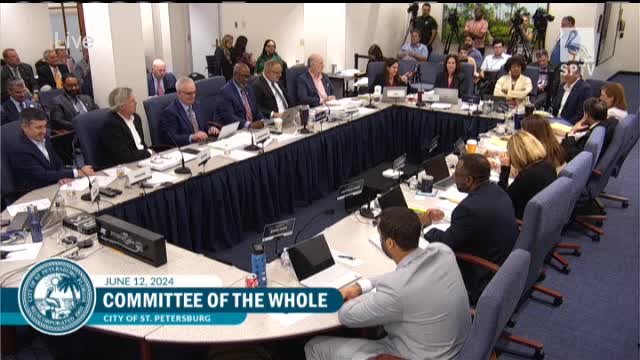New stadium plans prioritize accessibility and community engagement
June 12, 2024 | Saint Petersburg City, St. Petersburg County, Florida

This article was created by AI summarizing key points discussed. AI makes mistakes, so for full details and context, please refer to the video of the full meeting. Please report any errors so we can fix them. Report an error »

In a recent government meeting, officials discussed significant developments regarding the new stadium project in St. Petersburg, emphasizing accessibility, design innovations, and community engagement.
A key focus was on ensuring the new stadium meets the needs of the Americans with Disabilities Act (ADA) community. Officials highlighted that the current Tropicana Field, built before the ADA was enacted, lacks adequate options for individuals with mobility challenges. The new stadium aims to provide fully accessible seating across all categories, ensuring equal experiences for all attendees. There was a call for collaboration with local community groups to enhance understanding and integration of accessibility features.
The design of the new stadium also drew attention, particularly the innovative use of a fixed roof. This design not only addresses climate concerns, providing comfort and safety for fans, but also reduces construction costs significantly. The roof's design allows for a more pedestrian-friendly structure, enhancing the stadium's integration with surrounding developments.
Transportation planning was another critical topic, with discussions on creating a comprehensive transportation strategy for the area surrounding the stadium. Officials acknowledged the importance of accommodating various modes of transport, including pedestrian and bicycle access, and expressed a commitment to future-proofing the infrastructure to adapt to evolving transportation trends.
The meeting also touched on the financial aspects of the current Tropicana Field, revealing that the city has subsidized its operations significantly over the years. As the new stadium project progresses, officials are keen to ensure that it becomes a sustainable and financially viable asset for the community.
Overall, the discussions underscored a commitment to creating an inclusive, innovative, and economically sound stadium that serves the needs of all St. Petersburg residents and visitors.
A key focus was on ensuring the new stadium meets the needs of the Americans with Disabilities Act (ADA) community. Officials highlighted that the current Tropicana Field, built before the ADA was enacted, lacks adequate options for individuals with mobility challenges. The new stadium aims to provide fully accessible seating across all categories, ensuring equal experiences for all attendees. There was a call for collaboration with local community groups to enhance understanding and integration of accessibility features.
The design of the new stadium also drew attention, particularly the innovative use of a fixed roof. This design not only addresses climate concerns, providing comfort and safety for fans, but also reduces construction costs significantly. The roof's design allows for a more pedestrian-friendly structure, enhancing the stadium's integration with surrounding developments.
Transportation planning was another critical topic, with discussions on creating a comprehensive transportation strategy for the area surrounding the stadium. Officials acknowledged the importance of accommodating various modes of transport, including pedestrian and bicycle access, and expressed a commitment to future-proofing the infrastructure to adapt to evolving transportation trends.
The meeting also touched on the financial aspects of the current Tropicana Field, revealing that the city has subsidized its operations significantly over the years. As the new stadium project progresses, officials are keen to ensure that it becomes a sustainable and financially viable asset for the community.
Overall, the discussions underscored a commitment to creating an inclusive, innovative, and economically sound stadium that serves the needs of all St. Petersburg residents and visitors.
View full meeting
This article is based on a recent meeting—watch the full video and explore the complete transcript for deeper insights into the discussion.
View full meeting